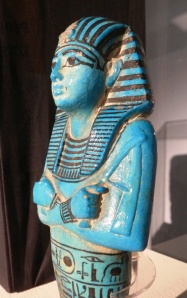Last week, along with other colleagues at Manchester, I attended a Renaissance North West training course at Lancashire Museums Conservation Studios in Preston on the identification of bone and ivory in both ethnographic and archaeological collections. The course provided a great opportunity to pick up practical skills from tutor Dr. Sonia O’Connor of Bradford University – an expert in osseous and keratinous materials, who will be featured as a guide in the new Ancient Worlds galleries. I welcomed the chance to become more familiar with scientific methods used regularly by conservation staff: also a good way to challenge the misconception of curators as locked in their ivory towers, if you’ll forgive the pun.
The course was timely, as I am currently working on the interpretation of bone and ivory objects that feature in the Pre- and Early Dynastic section of the new Egyptian World gallery. While most ivory from Egypt came from native hippopotami, elephant ivory is also attested as an exotic import. Bone and ivory have sometimes been confused for each other, and were put to a variety of uses. More objects of both materials than ever before will feature in the new galleries, including jewellery, utensils such as spoons, inlays for furniture, and tags to identify storage contents.
 and a male figurine of the same material wearing a penis sheath, in the same fashion as those made from gourds used in New Guinea today. Perforations at the base and a loop at the top of our example could allow for attachment to a waist belt – so are the terms ‘wand’ or ‘pendant’ just prudish euphemisms for what seems to be a penis sheath?
and a male figurine of the same material wearing a penis sheath, in the same fashion as those made from gourds used in New Guinea today. Perforations at the base and a loop at the top of our example could allow for attachment to a waist belt – so are the terms ‘wand’ or ‘pendant’ just prudish euphemisms for what seems to be a penis sheath?










